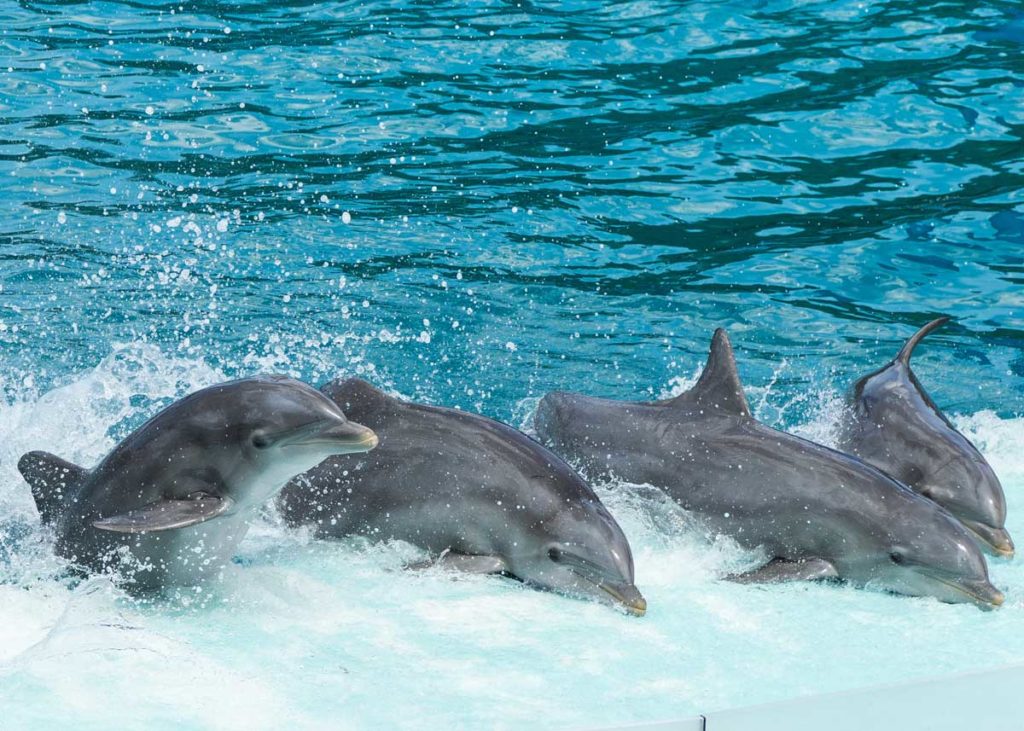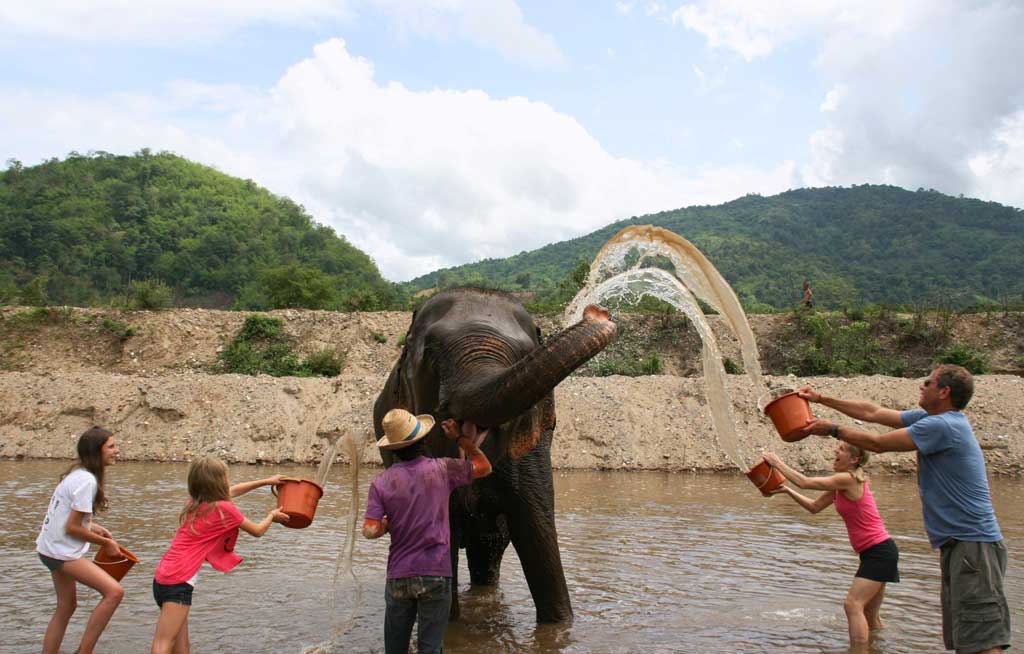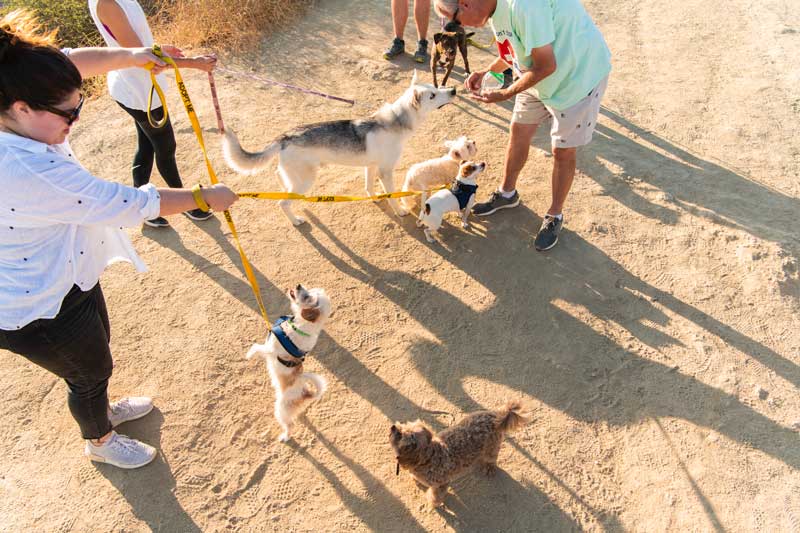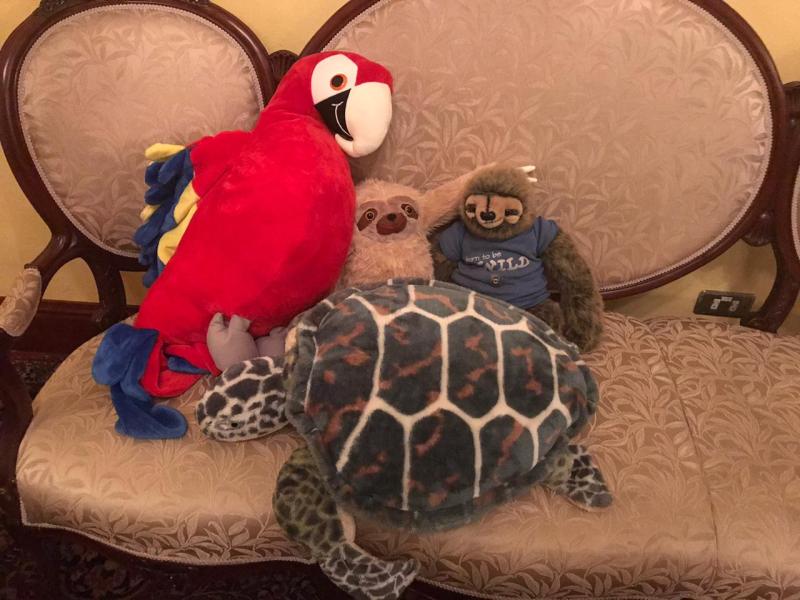Riding elephants, swimming with dolphins, and selfies with tigers are just some of the activities tourists often enjoy while on vacation. Most of these tourists would probably describe themselves as animal lovers, never realizing their interactions are actually detrimental to animal welfare.
The fact of the matter is, it is sometimes hard to know what is a “good” interaction with an animal and what is “bad.” For animals who share this planet with us to thrive, it is imperative we learn this distinction.
Elephants on the Forefront of Animal Welfare Awareness
During my first trip to Thailand, a country whose cultural and historical identity is deeply entwined with elephants, I visited Elephant Nature Park outside of Chiang Mai. I knew riding elephants was cruel, and it was, at the time in 2013, the only place I could find that did not allow visitors to ride on the backs of these majestic pachyderms.
Immensely popular today thanks in part to the good work and semi-celebrity of its founder, Lek Chaillert, the sanctuary rescues older elephants from lives of abuse working in the logging and tourist industries.
Through her Save Elephant Foundation, Lek has also launched a program to help trekking camps in Southeast Asia transition to non-riding activities while still benefiting from tourism dollars.
Since that first trip, I’ve spent a week volunteering not only at Elephant Nature Park, but also at Phuket Elephant Sanctuary, which got its start thanks to Save Elephant Foundation.
Education and activism have led to greater awareness about elephants. Many travelers today know that riding this highly sentient mammal only serves to support their abuse. In turn, more and more elephant camps are doing away with riding as a tourist attraction.
But what about seemingly more benign activities, like elephants painting pictures, playing with soccer balls, or giving “massages” with their trunks on the beach? How many times have we seen these “cute” videos shared on social media?
We humans tend to make judgments about animals based on appearance; after all, that’s all we have to go on. And some animals seem to be especially and perpetually happy. Have you ever seen an angry-looking dolphin? The point is, people naturally get a lot of enjoyment out of interacting with animals and might assume the feeling is mutual. So how do we know when our experience is hurting the animals we purport to love?

Photo by Juan Ignacio Escobar Tosi on Unsplash.
How to Spot Unethical Animal Interactions
According to Ben Williamson of World Animal Protection, a non-profit dedicated to safeguarding the welfare of animals worldwide, the golden rule for travelers is “if you can hold, ride, or take a selfie with a wild animal, chances are it’s a cruel activity.” He goes on to explain that “responsible wild animal encounters entail keeping a safe and respectful distance, not chasing the animals, minimizing noise, and leaving no waste behind.”
As exhilarating as it can be to touch or be close to an animal, direct contact, even if the animal was bred in captivity, is typically harmful. And at the end of the day, as cute and cuddly as a wild animal might seem, they are unpredictable and can therefore be dangerous.
If your travels involve interactions with animals, especially wild animals, follow these guidelines:
- Do not participate in photo opportunities where animals are used as selfie props. Selfies with tigers are especially popular. How cool to post a picture of yourself with an exotic feline on your Instagram feed? Sadly, those tigers have been drugged; how else would they comply without lunging at you. And if the drugs are not administered correctly or wear off, well that’s a pretty big risk to take, isn’t it?
- Avoid venues that hold marine mammals. Marine mammals, such as dolphins and orcas, are highly intelligent animals that cannot thrive in a captive environment. They spend their lives floating listlessly or swimming round and round in circles and chewing the bars of their prisons in frustration.
- Do not engage in bathing or feeding elephants. Even though these activities may seem harmless, elephants undergo many of the same cruel training techniques used to teach them to have humans ride on their backs. The only way to ensure elephant welfare is not compromised is to go to observation-only venues.
- Avoid venues where negative training techniques are used. If you observe animal abuse, tell the person in charge you do not like this behavior and report it to the authorities. Take a photo or video and share it on social media, write a bad review, and tell your friends why it was an unpleasant experience.

A Word About Sanctuaries
The word “sanctuary” tends to get thrown around loosely in animal tourism. In fact, some owners of unethical animal attractions purposely use it in their company names or in Google ad word buys to attract visitors who associate sanctuaries with ethical behavior.
Before visiting a so-called sanctuary, peruse the company website beyond the homepage, read visitor reviews, and even call the organization to ask if certain attractions are offered.
Travel Industry Leaders Champion Animal Welfare
While public opinion about the treatment of animals is hugely important, the travel industry plays a critical role in reducing the demand for wildlife entertainment. It’s pretty simple – if travel companies stop promoting activities that involve animal cruelty, tourists won’t be able to book those experiences, and those activities will either go out of business or be forced to shift their practices.
In October 2019, travel industry giant, Airbnb, unveiled Airbnb Animal Experiences, a new category within the company’s Experiences brand that allows people to connect with animals through caring, expert hosts. Underpinning Animal Experiences is an industry-leading animal welfare policy the company created in collaboration with World Animal Protection.
Some of the experiences animal-loving travelers can book via Airbnb are caring for rescued horses, kayaking alongside conservationists, learning urban beekeeping, and discovering artic foxes. You will never find an opportunity to ride an elephant or kiss a dolphin on Airbnb, and booking fees go to the non-profit Experience hosts.

Photo courtesy of Airbnb.
“Airbnb Animal Experiences are designed to deepen our appreciation for animals through the eyes of those who work and live alongside them,” explained Mikel Freemon, Head of Animals at the company.
“When we decided to create a dedicated category of these Experiences, we recognized there are many factors in animal tourism that conflict with our values of belonging. That’s why we partnered with World Animal Protection, to set a new standard for animal tourism so travelers can connect with animals easily and ethically.”
Airbnb isn’t the only travel company taking a stand. Booking.com, Trip Advisor, and Intrepid Travel join them as members of the Coalition for Ethical Wildlife Tourism, an alliance of travel industry leaders from across the globe committed to ending cruel wildlife entertainment.
In addition, hundreds of travel companies have signed a pledge with World Animal Protection to not sell or promote elephant rides and shows, while other agencies have agreed to not sell or promote dolphin experiences.
What’s Next?
The popularity of more ethical, observation-based experiences with animals, supported by travel industry leaders like Airbnb, is encouraging. Still, there are too many companies not doing the right thing, too many people still in the dark, and too many animals suffering as a result.
For this, governments can play a critical role. Take Costa Rica, a country that fiercely protects its environment and rich biodiversity. With their #StopAnimalSelfies campaign, they are educating tourists to not participate in exploitative activities by asking them to instead take photos with stuffed versions of animals.

Photo courtesy of Sam Trull and The Sloth Institute.
At the airports in San Jose and Liberia and a few other locations around the country, visitors will find selfie stations for taking photos with stuffed sloths, macaws, turtles, and other Costa Rican favorites. Learn more about this innovative campaign on The Sloth Institute website.
Ultimately, travelers must continue to demand experiences that promote animal welfare. They must also understand the cultural nuances sometimes involved. It may be easy to accuse big, for-profit travel companies that promote wildlife entertainment of corporate greed. But what about the family in rural Thailand whose livelihood depends on the small elephant trekking camp they’ve been running for generations? In our post-cOVID world, their plight, after more than a year of no tourists, is especially dire.
Doing the right thing isn’t as objective as we’d like it to be, and most countries are not like Costa Rica. Still, I believe if travelers are willing to pay for animal experiences that prioritize their well-being, booking companies will be eager to promote and sell them, and providers of those animal experiences will benefit financially. In the end, animals will win and we will all be better off for it.

1 comment
Great article Karen! Thanks for all that you do to promote animal welfare! 🤗
Comments are closed.